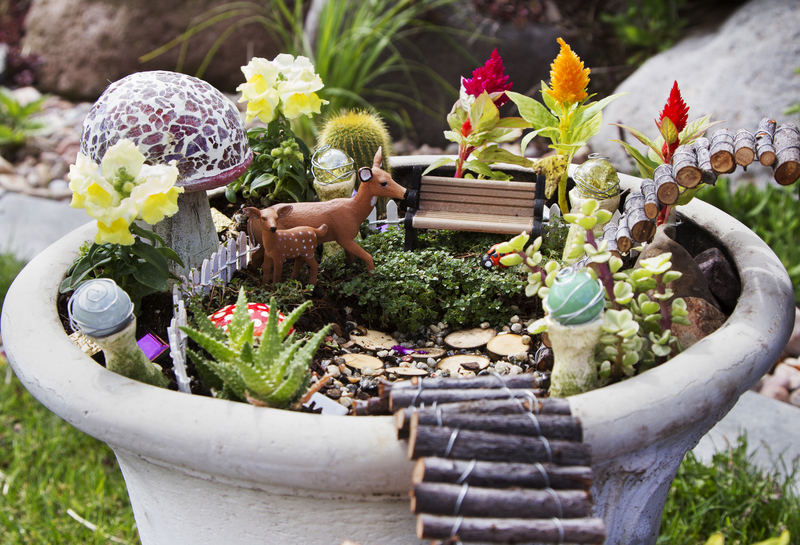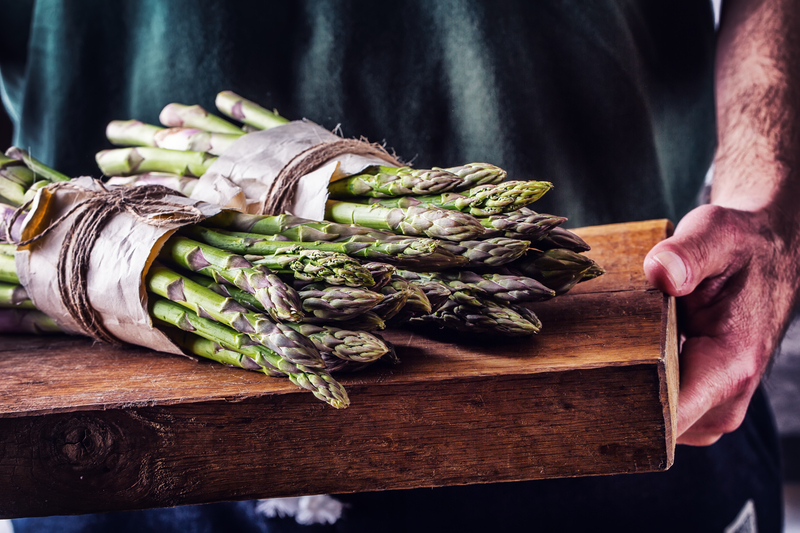Proactive Measures to Guard Garden Plants in Winter
Posted on 26/08/2025
Proactive Measures to Guard Garden Plants in Winter
As the chill of winter sets in, gardeners face the daunting task of protecting their precious plants from frost, snow, and icy winds. Taking proactive measures to guard garden plants in winter isn't just about preserving your garden's beauty--it ensures healthy growth and blooming when spring arrives. In this comprehensive guide, we delve deep into the best strategies to safeguard your garden plants during the cold months.
Why Winter Protection for Garden Plants Matters
Cold weather can be brutal for a variety of garden plants. Freezing temperatures, fluctuating weather, and harsh winds can damage roots, stems, and even kill sensitive species. Proactive measures help reduce the risk of plant loss, encourage strong root systems, and offer peace of mind.
- Preserves perennial plants and shrubs
- Reduces the need for costly replacements in spring
- Boosts plant health and vigor
- Encourages consistent and beautiful blooming seasons

Understanding Your Garden's Winter Needs
Not every plant requires identical protection. Before diving into winter plant protection strategies, it's critical to assess your local climate, soil type, and the hardiness zones of your garden plants.
Identify Vulnerable Garden Plants
Which plants require the most attention? Typically, young plants, tropical species, annuals treated as perennials, and those not rated for your USDA hardiness zone need the most care.
- Annuals and tender perennials
- Container plants and potted flowers
- Newly planted shrubs and trees
- Evergreens exposed to wind and sun
Record Your Garden Zones
Next, check your USDA Hardiness Zone and match your plantings accordingly. Plants not suited for your winter temperatures will need additional interventions for survival.
Key Proactive Measures to Guard Garden Plants in Winter
Early preparation is vital for winter plant protection. Below, we break down proven techniques for safeguarding your garden against winter damage.
1. Mulching: The First Line of Defense
Applying mulch is widely regarded as one of the most effective proactive actions to guard garden plants in winter.
- Insulation: A thick layer of organic mulch--such as straw, leaves, or wood chips--acts as insulation for plant roots, regulating soil temperature and preventing freeze-thaw cycles that can disrupt or expose roots.
- Moisture Retention: Mulch helps retain soil moisture during dry winter winds, which is essential since dehydration is a common reason for winter plant death.
- Pest Prevention: Some mulches deter pests that become more aggressive in cold when food sources are scarce.
When to mulch: Apply mulch after the first hard frost, when the ground is cold but not frozen.
2. Protecting Plants from Frost and Freeze
Frost is a silent killer for delicate plants. Proactive frost prevention is among the highest-impact measures you can implement.
- Cover plants with frost cloths, burlap, or old bed sheets overnight when a freeze is expected; remove during the day to allow sunlight and air circulation.
- Install hoop tunnels or cold frames for raised beds or rows of annuals. These structures trap heat and protect from snow or ice.
- For container plants, move pots close to your house or under eaves to maximize warmth and reduce wind exposure.
3. Watering Wisely Before and During Winter
Believe it or not, winter dehydration is a top contributor to plant stress and death. Plants need hydration even when growth appears dormant.
- Water deeply before the ground freezes to ensure soil moisture levels are adequate.
- On warmer winter days, check the soil near evergreens and newly planted trees; if dry, water during midday when temperatures are above freezing.
- Avoid overwatering as saturated soil can freeze and suffocate roots.
4. Windbreaks and Shelter for Sensitive Species
Cold, dry winds accelerate moisture loss and chill. Creating wind barriers can mean the difference between survival and winter burn.
- Erect fences, plant dense shrubs, or install burlap screens on the north and west sides of your property to block prevailing winds.
- Wrap trunks of young trees with tree wrap or burlap to prevent cracking and sunscald.
- Install temporary windbreaks around particularly sensitive plants using stakes and heavy-duty fabric.
5. Special Care for Container and Raised Bed Plants
Plants in containers and raised beds experience faster temperature fluctuations, making them more susceptible to root damage.
- Cluster containers together and place them against a south-facing wall to maximize warmth and shelter.
- Insulate pots with bubble wrap, hessian sacking, or bury them in mulch.
- For raised beds, use floating row covers or cold frames as added protection.
Additional Strategies for Winter Garden Plant Protection
Pruning with Caution
While pruning encourages healthy new growth, it can also make plants vulnerable if done at the wrong time. Never prune in late fall; this can stimulate tender shoots that are easily damaged by frost. Instead:
- Prune after the last hard frost in spring.
- Remove damaged or diseased branches in winter to prevent infection, but avoid heavy pruning.
Applying Anti-Desiccant Sprays
Evergreens, boxwoods, and rhododendrons are prone to water loss through their leaves in winter. An anti-desiccant spray provides a protective film to help reduce this moisture loss.
- Spray on a calm, dry day when temperatures are above freezing.
- Reapply as directed, usually every 4-6 weeks.
Clearing Snow and Ice Gently
Heavy snow and ice can break or bend branches, especially on evergreens. Gently brush off snow with a broom. Avoid shaking branches, as frozen wood is prone to snapping.
Monitoring for Pests and Disease
Pests overwintering in soil or under bark can attack weakened plants during the dormant season. Regularly inspect for signs of insect or rodent damage.
- Encircle tree trunks with hardware cloth to prevent rodent girdling.
- Monitor for fungal growth fostered by wet winter conditions.
Long-Term Planning for Winter Hardy Gardens
Incorporating winter resilience into your gardening philosophy pays dividends year after year. From plant selection to landscape design, decisions made today can reduce winter risks significantly in the future.
Choose Cold-Hardy Plant Varieties
Select perennials, shrubs, and trees rated for your USDA zone. Native plants and those specifically bred for cold tolerance are hardier and more likely to survive winter extremes.
- Seek guidance from local nurseries for plant recommendations.
- Group plants by similar hardiness needs for effective protection.
Consider Microclimates
Every garden has its unique microclimates created by buildings, fences, and trees. You can capitalize on warmer spots to shelter sensitive plants or establish wind- and sun-protected beds for the most valuable species.
Frequently Asked Questions: Winter Plant Protection
- How thick should mulch be? 2-4 inches is ideal, depending on the plant type and soil conditions.
- Should I fertilize in winter? No--avoid fertilizing late in the season as this can stimulate tender, frost-prone growth.
- What about indoor moveable plants? Bring tender tropical or house plants indoors before first frost and keep them away from drafts or radiators.

Quick Reference Checklist: Guard Garden Plants in Winter
- Mulch all exposed soil around roots
- Water deeply before freeze, and as needed during mild spells
- Install windbreaks and protective coverings
- Carefully wrap vulnerable trees and shrubs
- Monitor for pests and diseases regularly
- Clear snow and ice, but handle branches gently
Conclusion: Get Ahead for a Flourishing Spring Garden
Taking proactive measures to protect garden plants in winter is not just about surviving the cold; it's an investment in your garden's continued beauty and productivity. By understanding your climate, preparing ahead, and employing the right winter plant protection methods--from mulching to wind barriers and careful watering--your plants will emerge vibrant come spring. Embrace these strategies each winter to guard your garden plants and ensure a lush, thriving outdoor space all year round.
Ready to give your garden the best chance this winter? Start planning your defense today and watch your plants reward you in every season!

